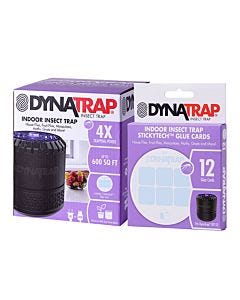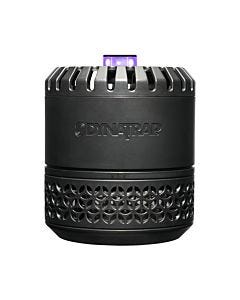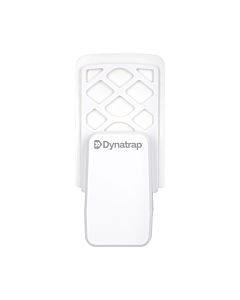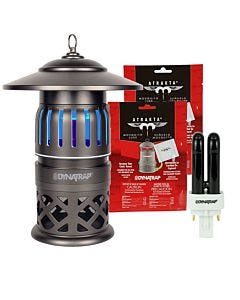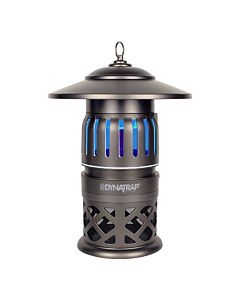
There’s no doubt about it. Flies are gross. They buzz around your head, land in your food, and can potentially carry diseases that can spread to humans. Flies need to get out and stay out, but how can you make that happen? Each species of fly prefers different foods and habitats, so it’s important to know which of these flying pests you’re dealing with. Whether it’s fruit flies or house flies, Dynatrap has you covered. Take a look below to learn more about these species, where they are found, prevention tips, and how you can get rid of them for good!
Identifying Different Species of Flies
Are the flies hovering above your plate of food different from those infesting your plants? Most likely, yes. While all flies are annoying, they have many differences in not only appearance but habitats, food preferences, and when they are active. Knowing which type of fly you’re dealing with will help you choose more effective trapping methods and allow you to target prevention methods specific to each type of fly for maximum results.
House Flies
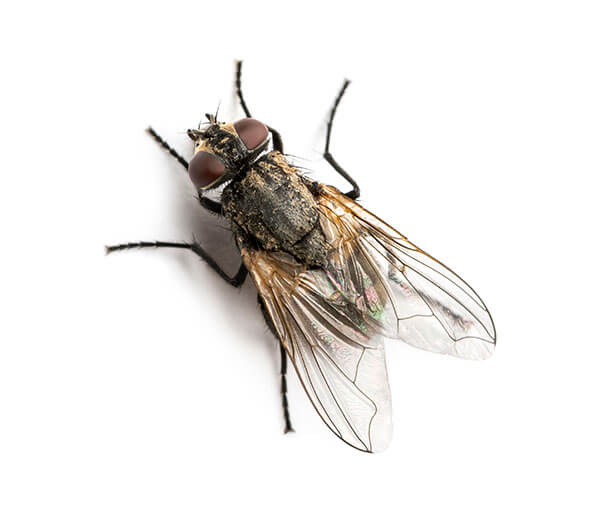
The house fly is the most common insect pest found in homes. These pests are found worldwide and have the potential to carry several diseases. While they only live for around 15-25 days, these flies can reproduce quickly and in large numbers, so it’s essential to identify house flies and get them under control quickly.
- Appearance — Flies are typically a dark gray in color with six legs and an oval body shape. They only grow to ¼” long and have small hairs all over their bodies. Each fly has one single pair of wings and a pair of red eyes that have thousands of individual lenses. No species of house flies have teeth or stingers.
- Diet — Due to their lack of teeth, flies can only feed on liquids. However, they can use their mouthparts to liquify solid foods. These flies are not too picky about what they eat and commonly feed on human food, animal carcasses, pet waste, and garbage.
- Habitat — House flies are typically only active during the day and will congregate near food sources, floors, ceilings, windows, and garbage cans.
- Signs of Infestation — The most obvious sign of an infestation is one or several flies buzzing around your home. Their larvae may also be seen crawling out from wherever their eggs were laid.
- Diseases Flies Can Spread — Dysentery, diarrhea, typhoid, cholera, and eye infections.
Fruit Flies
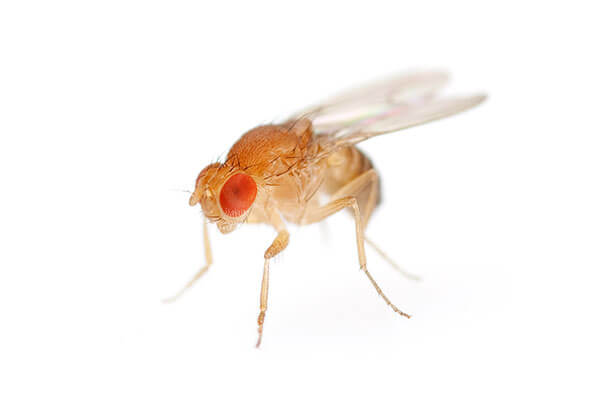
While fruit flies are related to house flies, many differences can affect your control methods. Fruit flies are found worldwide but are not quite as prolific as the common house fly.
- Appearance — These flies have distinctive red eyes, a tan thorax, and a black abdomen, making them relatively easy to identify. Each fly only grows to approximately 3-4mm in length and they live between 40-50 days.
- Diet — As their name suggests, fruit flies are extremely attracted to ripening or rotting fruit to both eat and lay their eggs.
- Habitat— You will be hard-pressed to find fruit flies far away from a source of fruit. If they are not hovering on or around your fruits and vegetables, they can be found near gardens, garbage cans, and containers that still have food residue.
- Signs of Infestation — The best way to tell if you have a fruit fly infestation is to inspect your fruits and vegetables for both adult flies and their larvae.
- Diseases Flies Can Spread — Fruit flies do not carry diseases that can be transmitted to humans. However, they can transmit bacteria to the food they infest which can be harmful to people.
Fungus Gnats
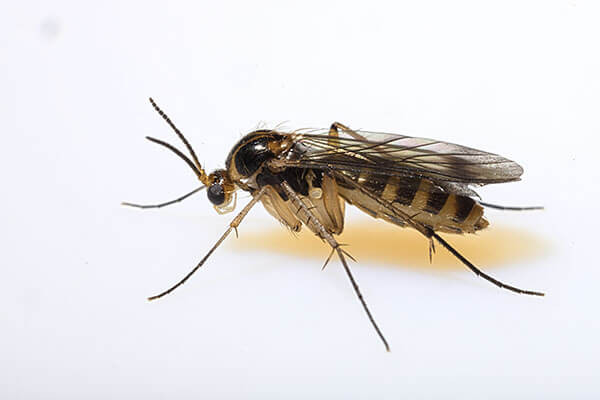
These lesser-known flying insect pests are a common problem for anyone with indoor plants. Fungus gnats are often confused with fruit flies, but they have distinct differences that should be noted to choose the best elimination method.
- Appearance — Fungus gnats are small flying insects that are usually brown or black with light-colored legs. These insects only grow up to ⅛-inch long. While fungus gnats are flies, they look more like a mosquitoes.
- Diet — Adult fungus gnats primarily feed on flower nectar while fungus gnat larvae prefer to feast on plant roots, organic matter, and fungi.
- Habitat — Fungus gnats love houseplants because they provide moist environments, such as soil, and food. Anywhere there’s a plant a fungus gnat can use for laying eggs or feeding, they will most likely be there.
- Signs of Infestation — Clusters of gnats hovering around your plants are the best indication of the presence of fungus gnats. However, you may have to shake your plants gently to see if they are infesting it since they do not constantly fly around and may sit closer to the stem.
- Diseases Flies Can Spread — Fungus gnats do not cause diseases in humans, but they can transmit fungal diseases, such as fusarium and verticillium, to your houseplants.
Drain Flies
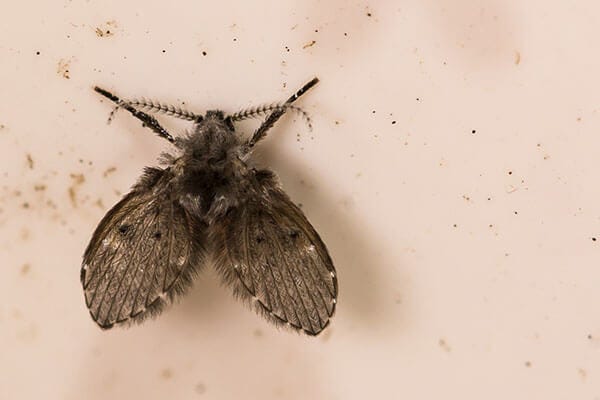
Drain flies can be trickier to notice, but they are still a nuisance that does not belong in your home. Don’t confuse these pests for moths, as sometimes their appearance can be deceiving.
- Appearance — Their light gray or tan coloring and fuzzy bodies make them appear like tiny moths than flies. Each of these flies grows up to ⅛-inch long and features a dark border around their wings.
- Diet — Drain fly larvae love to feast on the “slime” that builds up in sinks while adult drain flies prefer flower nectar and water found in drains or similar areas.
- Habitat — Just as their name implies, drain flies inhabit drains. They love dark, damp environments where food is readily available.
- Signs of Infestation — You may not notice the presence of drain fly larvae unless you take apart your plumbing, but adult drain flies make their presence known by frequently crawling or flying out of drains, especially in the kitchen.
- Diseases Flies Can Spread — Drain flies do not transmit diseases to humans but can aggravate existing asthma conditions in some people. In rare cases, drain fly larvae can also live as parasites in humans.
Pantry Moths
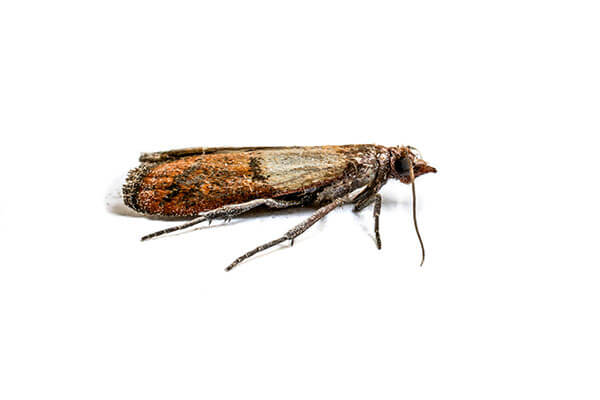
While pantry moths are not flies, they are a common house pest that can be eliminated with the same methods used for controlling flies.
- Appearance — These small winged insects are gray with brown and tan hues. They usually grow up to ⅝-inch long and typically have a black band in the middle of their wings separating two colors.
- Diet — Pantry moths love to feast on and lay eggs in your processed goods. Flour, pasta, cereals, grains, bread, spices, and other dry goods are major attractants for these pests.
- Habitat — The majority of pantry moths spend their time inside, mostly in kitchens where they have easy access to food.
- Signs of Infestation — The presence of webbing on the corners of product containers, unpleasant odors inside containers with dry food, clumping dry food, and the presence of small caterpillars or adult pantry moths are all telltale signs of an infestation.
- Diseases Flies Can Spread — Luckily, pantry moths do not spread any diseases, but you should dispose of any food where they have been found to avoid eating their waste, eggs, or larvae.
Control Flies and Other Insects With Dynatrap®
Essential Products for Eliminating Flies and Other Flying Insects
Now that you’ve learned more about different types of flies, it’s pretty obvious why you wouldn’t want them in your home. It’s probably safe to say you want to get rid of them as quickly as possible. Thank goodness for the existence of reliable fly traps. We’ve pulled together a list of the best of the best from Dynatrap and its sister brands to help you choose which options will work best for eliminating the pests plaguing your home.
- Dynatrap Indoor Traps - Indoor traps, like the Dynatrap Indoor Fly Trap and Dynatrap Indoor Insect Trap deliver unmatched control of flying insects in your home. Each trap uses an LED bulb to attract flying insects, day and night. Then, once drawn to the device, a glue card securely traps the insects. These powerful plug-in devices are effective against a variety of flying pests, including fruit flies, moths, gnats, and more. The best part? Trapped insects are hidden from view so you'll never have to see them.
- TERRO Fruit Fly Trap - It’s no secret that fruit flies love fruit. Dynatrap’s sister brand, TERRO, offers an effective solution that even comes in the shape of an apple! The Fruit Fly Trap’s small size allows it to be placed nearly anywhere you’ve seen signs of an infestation and its powerful, odorless design lures insects inside where they can’t escape.
- TERRO Garbage Guard - If flies or their larvae have infested your garbage can, Garbage Guard is an effective solution for targeting pests in this environment. This easy-to-use insect killer attaches directly to the lid of your outdoor trashcan and quickly eliminates pests with its deep-penetrating vapor.
- Safer Home Houseplant Sticky Stakes - Dynatrap’s other sister brand, Safer, offers many family-friendly indoor and outdoor insect solutions. Houseplant Sticky Stakes are designed for use in potted plants and are a great solution for fungus gnats and other flying insects that commonly hide in houseplants.
Flying Insect Prevention Tips
No one wants insects in their home, especially near their food. There are plenty of options to choose from to prevent infestations from getting a foothold. Use the following tips and advice to prevent insects from ever getting in your home.
- Make Repairs — While it can be hard to prevent flies from following you inside through the doors, inspect your home to ensure there isn’t another entrance they are using. Repair any holes in screens and fill in any cracks that can serve as an entrance for insects.
- Clean Regularly — Certain species of flies feed and breed in food waste. It’s essential to keep rotting food away from your home or sealed tightly in a container. Clean your kitchen drains or anywhere you dispose of food several times a month to prevent accumulations of food waste flies could take advantage of.
- Use Fly Traps Before Infestations — The best time to start the battle against flies and other flying insects is before you have a problem. It’s always better to fight a small infestation or a few flies that happened to find their way inside rather than a full-blown infestation. Use a variety of traps in various high-risk locations to prevent any infestation from taking off.
- Resist Overwatering Plants — Some flies, especially fungus gnats, thrive in wet environments and especially love wet soil near plants. Read the care instructions on your plants carefully to ensure you water them enough, but not too much!
- Seal Food Items — Food is a huge attractant no matter what insect problem you may have. Seal food items, such as flour, cereal, and sugar, in air-tight containers that will prevent insects from chewing or burrowing through the packaging to contaminate your food.
- Be Consistent — It may take several tries to eliminate insects, especially if they have been a problem for a while. Be consistent by changing, replacing, or emptying traps when they become full. It may take several tries to eliminate all insects and break their breeding cycles if they had a chance to lay eggs.
Which Methods Will You Choose?
Let us know on our Facebook page! Feel free to share your insect stories and show us pictures as well. Join our community by signing up for our e-newsletter. It will keep you updated on sales, new products, new articles, exclusive offers, and so much more!

